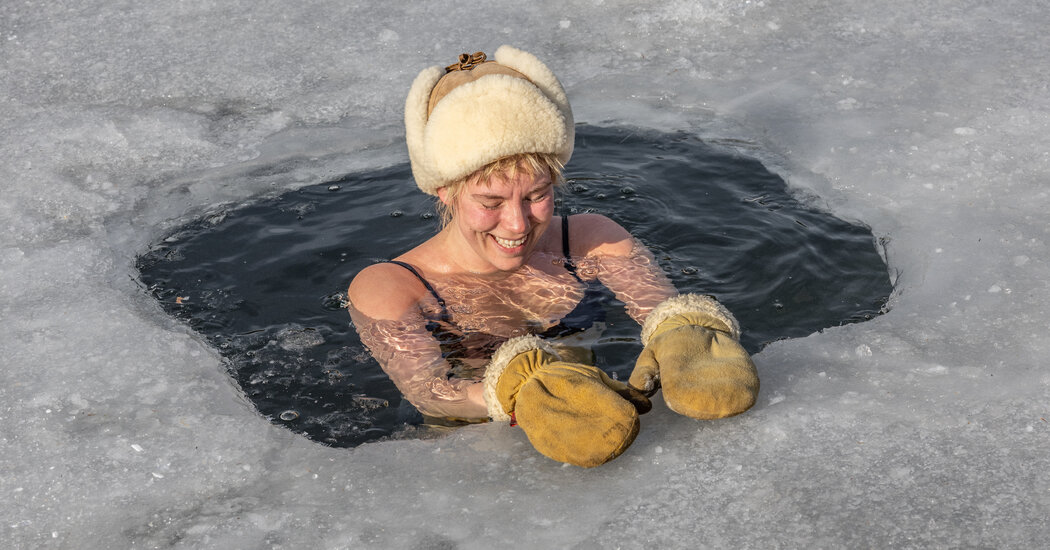When I met Ida Lennestål for a plunge on a cold January day, she was pulling an ax from her car and switching into warmer boots. A few minutes later, she lit a fire in a nearby sauna — a small building cobbled together from a former fish house and an old stove — before we walked the short slope down to a frozen pond near her home in Georgetown, Maine.
She took to the ice with the ax, chipping away at a rectangular opening and shedding a layer of clothing as her body warmed from the work. When her hands or back were tired, she’d pause and stretch. Eventually her partner and children joined us, lacing up skates and swirling or toddling along the pond’s surface. Two friends from the area, Nicole Testa and Ariel Burns, joined, too, using a ladle to scoop chunks from the water, clearing a path for their bodies.
Ida grew up in Northern Sweden, close to the Finnish border, in the arctic climate of her parents and grandparents. The practice of combining saunas and cold plunges, an aspect of her cultural and familial traditions that stretches back for generations, is something she brought with her to Maine; she sees it as a way to share her culture with her community and to feel connected to her home and to herself. “This became especially important during the pandemic when the distance between me and my people back home felt even bigger than before,” she said.
When the ice was ready and the sauna was warm, we all stripped to our bathing suits and boots and took turns dipping our bodies into the cold water. The sun came out, but it seemed to offer no warmth.
“The sauna and dip for me is a way to get out of my head and into my body,” Ida said. “When I’m in a hot box” — what she often calls the sauna — “or in an ice-cold body of water, my body doesn’t worry about the future or the past, how it looks or whether it is loved. The body just is.”
After the initial plunge, our bodies felt calm and slow. It was time for the sauna. Inside, the air, which smelled like cedar, was hot enough to pull sweat immediately. My body seemed to relish the experience of opposites, the way the cold and the heat affected my circulation and altered my breathing. The group repeated the plunge three times: plunge, sauna, plunge, sauna, plunge, sauna. Each transition felt like a little renewal.
“These sessions are a direct experience of the body, anchoring me into the present moment,” Ida said. “It has taught me to sit with the uncomfortable, both the hot…
Click Here to Read the Full Original Article at NYT > Travel…
